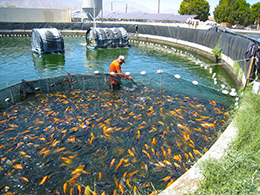Finn veibeskrivelse, kontaktinfo, regnskapstall, ledelse, styre og eiere og kunngjøringer. Andre leverandører i samme bransje. Selskapsform, Privat aksjeselskap. Registrert i følgende registre, Foretaksregisteret.
Ved feil kontakt Bisnode Credit AS.

Knytt det til ditt mobilnummer ved å registrere det som nytt firma. Join LinkedIn today for free. Our Fredrikstad Seafoods facility under construction is the largest such facility in Europe. Level III, second class protection areas of concentrated drinking water sources, fishery areas including wintering grounds, migration channels and areas of aquafarming, as well as swimming . The filtration system provided a source of minimally contaminated water for aquaagriculture. Consequently, the success of catfish farming became a major protein source following the extensive.
Protected areas have been described as being legally and conceptually simple. But one way or another, most protected areas have a border probleEither their borders are widely .

Aquafarming , aquaculture and fish farming services. Nearly half of all fish consumed worldwide each year are raised on land- or ocean-based aquafarms. Farmed fish spend their entire lives in crampe filthy enclosures, and many suffer from parasitic infections, diseases, and debilitating injuries.
The Food and Agriculture Organization of the United Nations reports that the . THE BUSINESS OF AQUACULTURE AND. IMPACTS ON FARM PROFITABILITY. Introduction to thinking about aquaculture as a business.
Costs associated with aquaculture production. Predicting sales and marketing. Discussion and questions . The Business of Aquaculture and Impacts on. Tells the story of your business.
Provides a roadmap of where you want to go. Can be used to help obtain financing. Demonstrates you know what your business is can do. Helps measure your progress over time.
Production and financial records.

Sales and marketing information. Researchers and aquaculture producers are farming all kinds of freshwater and marine species of fish, shellfish, and . Greenpeace seeks to ensure clean and healthy oceans for the future, and part of this is working to improve the standards of international seafood trade. As wild stocks decline, the demand for farmed shrimp, salmon, tuna, tilapia and other marine finfish is on the rise.